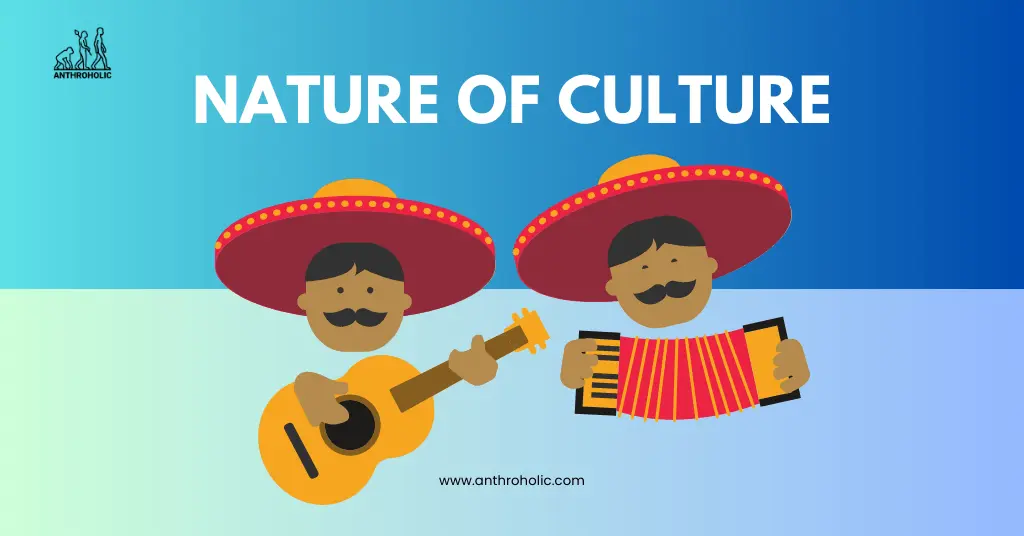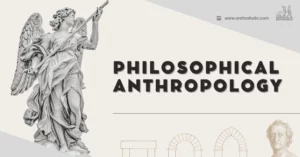AI Answer Evaluation Platform Live Now. Try Free Answer Evaluation Now
Nature of Culture
Culture is a broad concept, encompassing the beliefs, customs, arts, and other human intellectual achievements of a particular society or social group. Culture is more than just art, music, and cuisine—it’s an intricate tapestry of shared beliefs, values, and customs that knit communities together. The “Nature of Culture” varies from society to society, evolving and adapting with time and circumstance.

Understanding Culture
Culture is an integral part of human existence and experience, guiding societal values and behaviors. It’s a social construct that evolves over time, reflecting a society’s historical, geographical, and societal context.
- It is shared: Culture is a collective phenomenon that transcends individual beliefs or actions. It is passed down from generation to generation, creating a sense of community and identity.
- It is learned: Unlike biological characteristics, culture is not inherited but acquired. It is taught and learned through a process known as socialization.
- It is symbolic: Culture often manifests itself in symbolic forms, such as language, art, and rituals, which carry specific meanings within a social group.
- It is adaptive and dynamic: Culture evolves in response to changing environments, needs, and influences. This adaptability enables societies to survive and thrive.
Dimensions of Culture
Cultural dimensions refer to the common aspects that help in the understanding and interpretation of culture. Dutch social psychologist Geert Hofstede’s cultural dimensions theory identifies six key dimensions:
| Dimension | Description |
|---|---|
| Power Distance Index | The extent to which less powerful members accept power disparity. |
| Individualism vs. Collectivism | Preference for a loosely-knit social framework (individualism) or a tightly-integrated society (collectivism). |
| Uncertainty Avoidance Index | Society’s tolerance for uncertainty and ambiguity. |
| Masculinity vs. Femininity | Distribution of roles between genders, where masculinity stands for assertiveness and femininity represents nurturance. |
| Long-term Orientation vs. Short-term Normative Orientation | Respect for traditions, fulfilling social obligations, and protecting ‘face’ (short-term) vs. thrift and perseverance (long-term). |
| Indulgence vs. Restraint | The extent of gratification of desires and enjoyment of life (indulgence) or the regulation of desires and behaviors by social norms (restraint). |

Transmission of Culture
Culture is transmitted through two key processes:
- Enculturation: The process of learning the culture in which one is born or raised. It includes:
- Imitation: Observing and copying behaviors.
- Instruction: Direct teaching of cultural norms and values.
- Conditioning: Reward or punishment to reinforce or discourage certain behaviors.
- Acculturation: The process of adopting the cultural traits of another group, often as a result of immigration or colonization.
Impact of Culture on Society
Culture profoundly impacts societal norms, behaviors, and perceptions. It shapes:
- Values: Culture dictates what is important in a society, influencing moral judgments and ethical codes.
- Social structures: Culture provides a framework for social organization, including roles, relationships, and hierarchies.
- Identity: Cultural heritage and traditions contribute significantly to personal and group identity, providing a sense of belonging and self-understanding.
- Perception and cognition: Culture can affect how people perceive and interpret the world around them, influencing cognitive processes and decision making.
Influence of Culture on Individual Behavior
Culture is instrumental in shaping individual behavior, attitudes, and perceptions. It influences a person’s worldview, guiding their actions, decisions, and interpersonal relationships.
- Language and Communication: Culture dictates language and modes of communication. The specific nuances, idioms, and conventions within a language can shape an individual’s thoughts and worldview.
- Decision Making: Culture influences an individual’s decision-making process, with different cultures prioritizing varied aspects such as individual autonomy, collective responsibility, short-term gains, or long-term benefits.
- Mental Health: Culture impacts the perception of mental health, the symptoms individuals report, and the coping strategies employed. It plays a vital role in defining what is considered normal or abnormal within a society.
Culture and Globalization
Globalization has a profound impact on the transmission and evolution of culture. The interconnectivity brought about by globalization results in a constant exchange and interaction of cultures:
- Cultural Diffusion: This is the spread of cultural elements, including ideas, styles, religions, technologies, languages etc., from one area or group of people to others.
- Cultural Convergence: The tendency for cultures to become more alike due to globalization. This could lead to the dominance of a single global culture, often western in nature.
- Cultural Divergence: Conversely, cultures may react against globalization by reinforcing traditional cultural practices and identities, resulting in increased distinctiveness and diversity.
The Role of Technology in Culture
Technology has become a significant driving force in shaping and transmitting culture:
- Digital Culture: The rise of digital technologies has given birth to new cultural phenomena and modes of expression, including social media trends, memes, and virtual communities.
- Information Accessibility: Technology has made cultural knowledge more accessible, enabling individuals to learn about different cultures with a click of a button.
- Virtual Communities: The internet has fostered the development of virtual communities that share common interests, transcending geographical boundaries and creating new cultural spaces.
Conclusion
Culture, in its multifaceted nature, is dynamic, learned, symbolic, and adaptive. It continues to shape and get shaped by the societal and individual behavior, the processes of globalization, and the technological advancements of our times. It is therefore critical to engage in continuous cultural understanding, respect, and appreciation to promote social harmony and progress.
References
- Berry, J. W. (2005). Acculturation: Living successfully in two cultures. International Journal of Intercultural Relations, 29(6), 697-712.
- Geertz, C. (1973). The interpretation of cultures. Basic books.
- Hofstede, G. (1980). Culture’s Consequences: Comparing Values, Behaviors, Institutions, and Organizations Across Nations. Sage Publications. https://digitalcommons.usu.edu/unf_research/53/
- Inglehart, R., & Baker, W. E. (2000). Modernization, cultural change, and the persistence of traditional values. American sociological review, 19-51.
- Nisbett, R. E., Peng, K., Choi, I., & Norenzayan, A. (2001). Culture and systems of thought: holistic versus analytic cognition. Psychological review, 108(2), 291.
- Richerson, P. J., & Boyd, R. (2005). Not by genes alone: How culture transformed human evolution. University of Chicago Press.
- Rogoff, B. (2003). The cultural nature of human development. Oxford University Press.
- Schwartz, S. H. (2019). Culture’s consequences: Comparing values, behaviors, institutions, and organizations across nations. In Organizational culture and leadership.
- Swidler, A. (1986). Culture in action: Symbols and strategies. American sociological review, 273-286.
- Markus, H. R., & Kitayama, S. (1991). Culture and the self: Implications for cognition, emotion, and motivation. Psychological review, 98(2), 224.
- Whorf, B. L. (1956). Language, thought, and reality: Selected writings of Benjamin Lee Whorf. MIT press.
- Weber, E. U., & Hsee, C. (2000). Culture and individual judgment and decision making. Applied Psychology, 49(1), 32-61.
- Kleinman, A., & Good, B. (1985). Culture and depression: Studies in the anthropology and cross-cultural psychiatry of affect and disorder. Univ of California Press.
- Tomlinson, J. (1999). Globalization and culture. University of Chicago Press.
- Kietzmann, J. H., Hermkens, K., McCarthy, I. P., & Silvestre, B. S. (2013). Social media? Get serious! Understanding the functional building blocks of social media. Business horizons, 54(3), 241-251.




